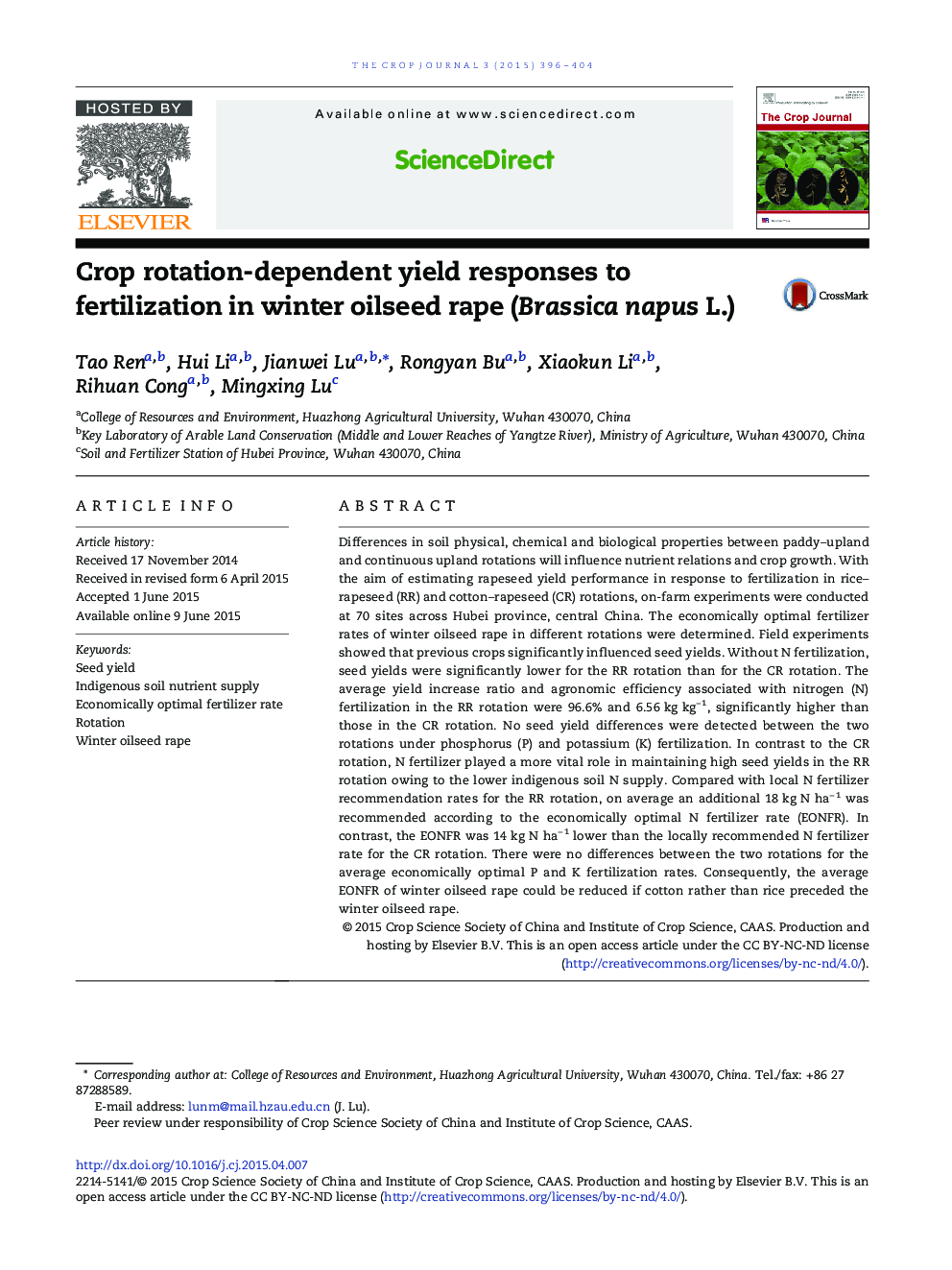| Article ID | Journal | Published Year | Pages | File Type |
|---|---|---|---|---|
| 2079443 | The Crop Journal | 2015 | 9 Pages |
Differences in soil physical, chemical and biological properties between paddy–upland and continuous upland rotations will influence nutrient relations and crop growth. With the aim of estimating rapeseed yield performance in response to fertilization in rice–rapeseed (RR) and cotton–rapeseed (CR) rotations, on-farm experiments were conducted at 70 sites across Hubei province, central China. The economically optimal fertilizer rates of winter oilseed rape in different rotations were determined. Field experiments showed that previous crops significantly influenced seed yields. Without N fertilization, seed yields were significantly lower for the RR rotation than for the CR rotation. The average yield increase ratio and agronomic efficiency associated with nitrogen (N) fertilization in the RR rotation were 96.6% and 6.56 kg kg− 1, significantly higher than those in the CR rotation. No seed yield differences were detected between the two rotations under phosphorus (P) and potassium (K) fertilization. In contrast to the CR rotation, N fertilizer played a more vital role in maintaining high seed yields in the RR rotation owing to the lower indigenous soil N supply. Compared with local N fertilizer recommendation rates for the RR rotation, on average an additional 18 kg N ha− 1 was recommended according to the economically optimal N fertilizer rate (EONFR). In contrast, the EONFR was 14 kg N ha− 1 lower than the locally recommended N fertilizer rate for the CR rotation. There were no differences between the two rotations for the average economically optimal P and K fertilization rates. Consequently, the average EONFR of winter oilseed rape could be reduced if cotton rather than rice preceded the winter oilseed rape.
